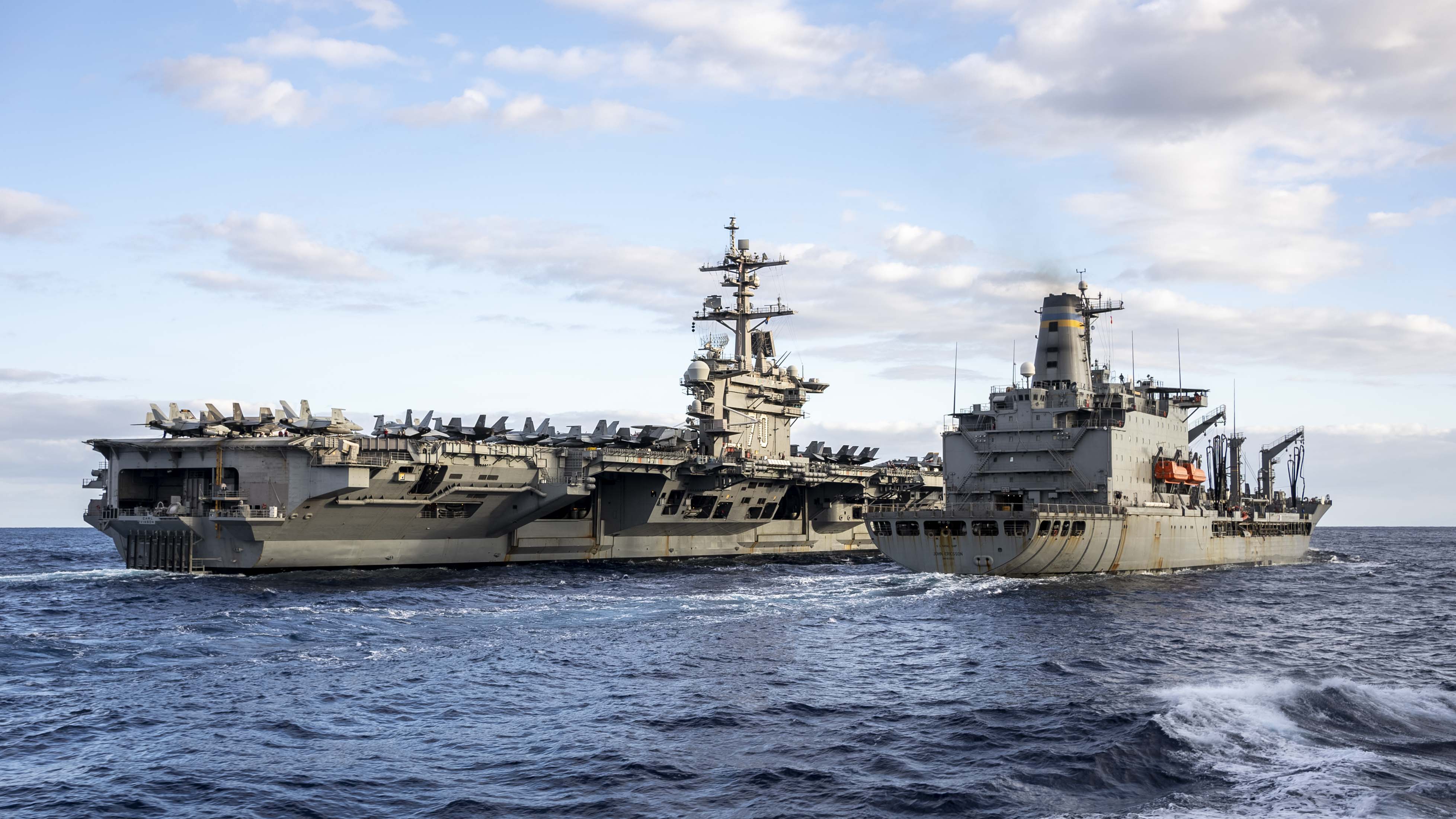
The Carl Vinson Carrier Strike Group (CSG), the Japan Maritime Self Defense Force (JMSDF) and the Republic of Korea Navy (ROKN) carried out trilateral drills from Monday to Wednesday in the East China Sea in the wake of North Korea’s firing of an intermediate-range ballistic missile (IRBM) on Sunday.
The Carl Vinson CSG, comprising of carrier USS Carl Vinson (CVN-70) with embarked Carrier Air Wing (CVW) 2, cruiser USS Princeton (CG-59) and destroyers USS Kidd (DDG-100) and USS Sterett (DDG-104), carried out the three-day drill with JMSDF helicopter destroyer JS Hyuga (DDH-181) and destroyer JS Kongo (DDG-173) and ROKN destroyers ROKS Sejong the Great (DDG-991) and ROKS Wang Geon (DDH-978).
A Navy release stated that during drills, joint sailing, advanced maritime communication operations, maritime interdiction operations training, air combat drills, staff exchanges and integration were carried out. The three navies also last trained together in November last year.
“Our strike group welcomes the opportunity to train again and further build on our capabilities as a combined force with maritime forces from Japan and the Republic of Korea,” said Rear Adm. Carlos Sardiello, CSG-1 commander, in the release. “Sailing and flying together safely alongside our allies demonstrates our commitment to improving information sharing and working together effectively, to enhance our ability to coordinate on maritime domain awareness and other shared security interests.”
In a JMSDF release, the commander of the JMSDF units taking part in the drills stated the drills were to enable the three countries to enhance their cooperation in responding to regional security situations. “Moreover, this trilateral exercise was carried out to strongly promote our cooperation in order to respond to regional security issues and demonstrate our commitment to strengthen rules-based free and open international order,” said Commander of JMSDF Escort Flotilla 3, Rear Adm. Kazushi Yokota.
The JSC release also stated that the drill focused on improving the deterrence and response capabilities of the three countries to recent North Korean nuclear and missile threats and underwater threats, and promoting trilateral cooperation in response to maritime security threats.
South Korea’s Joint Chiefs of Staff (JCS) stated in a release that the trilateral drill was the first joint naval exercise held following the three countries December agreement to establish a multiyear trilateral exercise plan that would begin in early this year.
South Korean JCS Chairman Adm. Kim Myung-soo flew out to Carl Vinson on the first day of the drills to observe the exercise. “The ROK-U.S. -Japan maritime exercises have contributed significantly to deterring and responding to North Korea’s increasingly advanced nuclear and missile threats,” said Adm. Kim in the JCS release. He also emphasized that South Korea, the U.S. and Japan will continue to strengthen their joint defense posture in accordance with the multiyear trilateral training plan.
As of press time, North Korea has not issued any statement in response to the drill, though last year in December during his speech at a party conference, North Korean leader Kim Jong Un lashed out at the United States for continuously introducing various nuclear strategic capabilities into the Korean peninsula, including dispatching nuclear-powered carrier strike groups. Three CSGs – the Nimitz CSG, Ronald Reagan CSG and Carl Vinson CSG – made separate port calls to South Korea in 2023.
Meanwhile, in Australia, ABC News reported that China’s Ambassador to Australia claimed a JMSDF warship was responsible for a Nov. 14 incident in which Royal Australian Navy (RAN) divers from frigate HMAS Toowoomba (FFH156) were injured by sonar from People’s Liberation Army Navy destroyer CNS Ningbo (139). According to ABC News, Ambassador Xiao Qian claimed during a press briefing with Australian media that if the PLAN ship had used its sonar, the Australian divers would have been killed or seriously injured.
In a New Year press conference China’s ambassador Xiao Qian has claimed a nearby Japanese warship may have been responsible for last year’s sonar incident involving the PLA-Navy which injured a diver from HMAS Toowoomba in international waters pic.twitter.com/nWEnAwEUyo
— Andrew Greene (@AndrewBGreene) January 17, 2024
Toowoomba was conducting U.N. monitoring and surveillance missions of North Korea sanctions violations. Last year, the Chinese military also harassed helicopters embarked on Canadian warships and other aircraft conducting the same mission. China has claimed that the sanction-violation-monitoring activities are a cover for reconnaissance missions in China.





